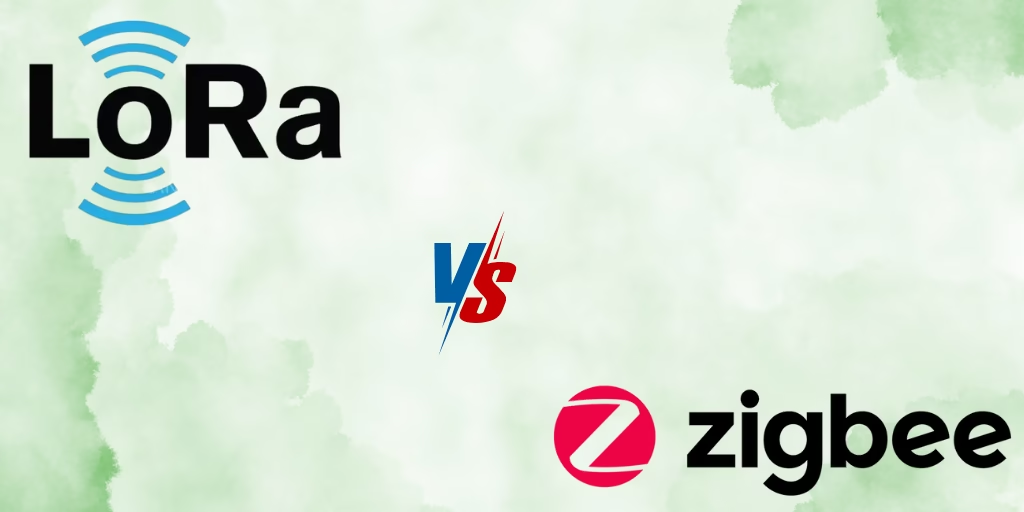LoRa Vs Zigbee - Smart Home Wireless Technology
Smart home systems rely on wireless communication technology to connect an ever growing number of smart devices, from sensors and lighting to security systems and thermostats.
Two wireless network protocols that often come up a lot when talking about smart homes are LoRa (Long Range) and Zigbee. Both offer low power connectivity but come with unique strengths and weaknesses. Deciding which technology to use depends on your needs, device density and range requirements.
Technical Overview
LoRa:
LoRa is engineered for long distance, low power wireless communication. Typically using a star network topology where multiple end smart devices communicate directly with a central gateway or hub. This setup is ideal for sparse networks where devices may be spread over large outdoor areas or across large properties with challenging layouts.
Find out more about LoRa Vs LoRaWAN
Zigbee:
Zigbee leverages a mesh network architecture where devices can pass messages along to one another, ultimately getting to the Zigbee central hub. This improves reliability and since data can take several routes to reach its destination but it also improves coverage.
Comparing Key Technical Parameters
| Parameter | LoRa | Zigbee |
|---|---|---|
| Range | Typical ranges 0.25 to 9 miles in open rural areas; reduced indoors but still very beneficial over large areas. | Typically 10 to 30 metres indoors; mesh networking can extend the effective range significantly. |
| Data Rate | Generally low – from about 0.3 kbps up to ~27 kbps, which is ideal for sending small amounts of sensor data | Up to 250 kbps, allowing for more frequent messaging and higher throughput. |
| Battery Life | Ultra low power design can enable battery lives of up to 5 years in low‐duty cycles. | Optimised for low energy consumption; battery life can commonly span 2 years depending on device use and network load. |
| Frequency Bands | Generally operates in sub‐GHz bands of 868 MHz in UK \ Europe) to reduce interference. | Primarily operates in the 2.4 GHz band. |
| Topology | Star topology, excellent for centralised gateways where devices send infrequent data transmissions. | Mesh topology, improving reliability and coverage in densely populated device environments. |
When to Choose One Over the Other
Choose Zigbee:
- Indoor Coverage and Device Density: Your smart home is concentrated in a relatively small area, such as a typical home or flat. Zigbee’s mesh networking ensures that if one smart device fails, others can relay signals, boosting overall reliability.
- Choice: Many consumer devices, from sensors to smart plugs are built around Zigbee. Its very widespread adoption means there are many different types of smart devices from lots of manufacturers, giving a massive range of choice
- Integration: Zigbee is one of the most widely used wireless standards in smart homes. Thanks to its standardised protocol and mesh networking, devices from different manufacturers can work together. Letting you manage lights, sensors, plugs and more from a single hub or platform
Choose LoRa:
- Extended Range Needs: If your smart home setup extends outdoors or covers a large indoor area (think multi‐building estates or properties with expansive gardens).
- Minimal Data Throughput Requirements: The lower throughput often translates into very long battery life. Most smart devices only need to transmit small amounts of data.
- Low Interference in Specific Frequency Bands: Operating in sub GHz frequencies, LoRa faces less interference compared to the crowded 2.4 GHz band used by Zigbee, WiFi and Bluetooth networks. Less interference means a reliable and stronger wireless signal.
How To Connect LoRa and Zigbee Devices to the Internet
Both LoRa and Zigbee are technologies that are only used for communication between smart devices. Neither technology has the capability of directly connecting to a local home WiFi network or internet.
To connect to a local network or the internet, you need a gateway or hub that can bridge Zigbee or LoRa with the local network. A smart gateway or hub does this by connecting to your home WiFi router using network via WiFi (typically 2.4GHz) or a wired LAN connection.
Practical Considerations for Smart Homes
Choosing between LoRa and Zigbee isn’t simply a matter of which technology is “better” overal, it’s about matching the right strengths to your smart home’s specific needs. For most indoor residential applications, Zigbee’s mesh network is a good choice. It supports many devices and allows integration with popular smart home hubs and voice assistants.
Conversely, if you are designing a system that must cover extensive outdoor or indoor areas LoRa’s ultra long range capabilities and extended battery life come into their own.
You may even consider hybrid solutions. For instance, you could deploy LoRa for outdoor sensors and use Zigbee for your indoor devices, with a gateway translating the data between technologies. This approach allows you to harness the strengths of both systems.





